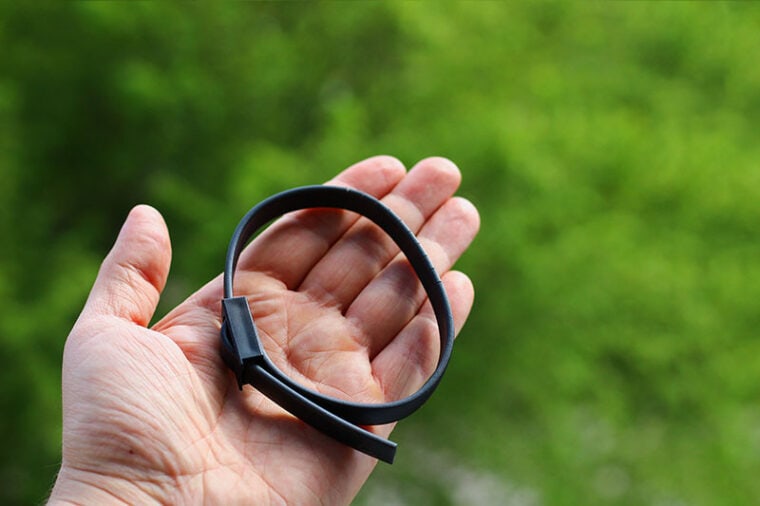
Fleas are one of the most annoying problems you and your cat will face, especially if yours is an outdoor kitty. Not only are fleas annoying due to their bites and the itch they cause, but they also carry or transmit several diseases, including tapeworms. Fleas are also a fatal problem for kittens and cause “cat scratch disease” transmission between humans and cats. For these reasons and several more, fleas need to be controlled, so they don’t affect you, your cat, and the rest of your family. One of the ways you can do this is with a flea collar.
Many cat parents have one question about flea collars: “Can I use a dog flea collar on my cat?” The answer to this question is a definitive no. Veterinarians agree that you should never use a dog flea collar on a cat as it can lead to diarrhea, convulsions, and, in extreme cases, the death of your precious cat.
If you have more questions about cats, flea collars, and preventing these nasty insects from becoming a problem, we have real-world information and advice for you below. Why can’t you use a dog collar on a cat, for example, and are all flea collars toxic for cats? Read on to find out and ensure your cat stays healthy, safe, and flea-free.
Why Can’t You Use a Dog Flea Collar on a Cat?
The chemical permethrin is the primary reason you should never use a dog flea collar on a cat (or kitten). Permethrin, derived from the chrysanthemum plant, is used in dog flea collars and is very effective. It’s also considered to be very safe, at least for dogs, by the Pet Poison Helpline.
The problem is that permethrin on dog flea collars is almost always synthetic, and cats don’t have the natural ability to process synthetic permethrin. Exposure to high levels of the chemical can make a cat extremely ill, cause vomiting and diarrhea, which is often severe, and, as mentioned earlier, can cause death in extreme cases.

Can Other Dog Flea Treatments Be Used on Cats?
The best way to protect your cat from any unwanted (or deadly) side effects of dog flea products is simply not to use them. Although there might be a product or two that won’t harm your cat, the chances and risks are too high. We think you’ll agree; the last thing you want is to try a dog flea product on your cat and find out that it hurts or kills them.
Other health products for dogs, including products to control parasites, can also harm your cat. These products might not contain permethrin, but, since they’re made for dogs and dogs are usually much larger than cats, the concentration of chemicals is often far too high for your cat’s body to handle.
Again, it’s much better to err on the side of caution and only use products specifically made for cats when treating their fleas and other health-related problems.
What Are the Signs and Symptoms of Permethrin Poisoning?
Permethrin in high enough concentrations can cause a world of hurt for your kitty cat that will not be pleasant to see and hear. The symptoms usually start within 12 hours of being exposed to the chemical and include the following:
There’s no specific medical treatment for permethrin poisoning, only supportive care to keep your cat comfortable while the chemical passes out of its body. The time between the first exposure to permethrin being eliminated from a cat’s body is 3 to 4 days. During that time, your veterinarian may put your cat on intravenous fluids.
Often a lukewarm bath is given to remove any permethrin from a cat’s fur and prevent it from absorbing more of the chemical through its skin. Also, your cat will be kept warm to prevent seizures and control any tremors they might be experiencing.
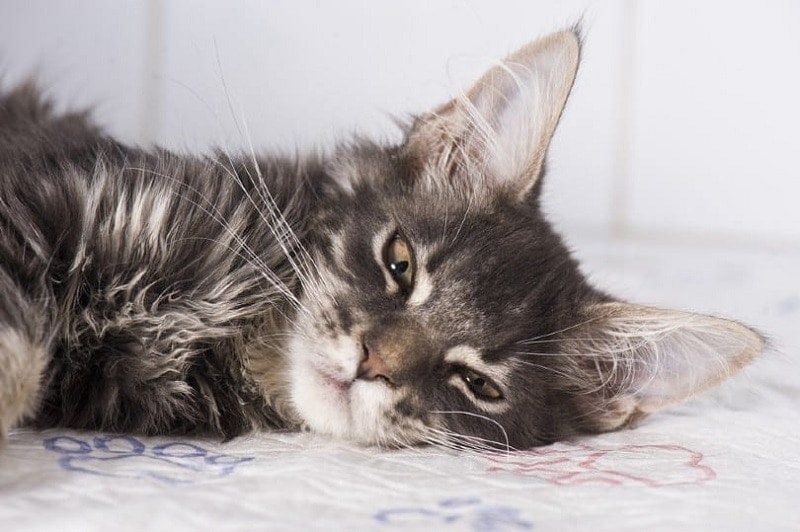
Is it Recommended to Use a Flea Collar on a Cat?
You might think that, even though a dog flea collar can hurt your cat, a cat flea collar certainly won’t cause them any problems or health risks. According to veterinarians, however, flea collars for cats can also be unsafe in some situations. That’s because cat flea collars, like dog flea collars, use chemicals that might make your cat sick. Some also emit a gas that’s toxic for fleas but also toxic for your cat.
Besides being unsafe for your feline, most veterinarians agree that flea collars don’t work for cats. There are several reasons, including that even the best flea collar will only prevent fleas from attacking and making their home in and around your cat’s head. As for the rest of their body, they’re not as effective. Many vets also believe that flea collars don’t even kill fleas, making them a waste of time and money.
TIP: How to Use a Cat Flea Collar (Instead of Throwing it Away)
If you’ve purchased flea collars and are now wondering what to do with them, here’s a tip; toss them into your vacuum canister. Here’s how:
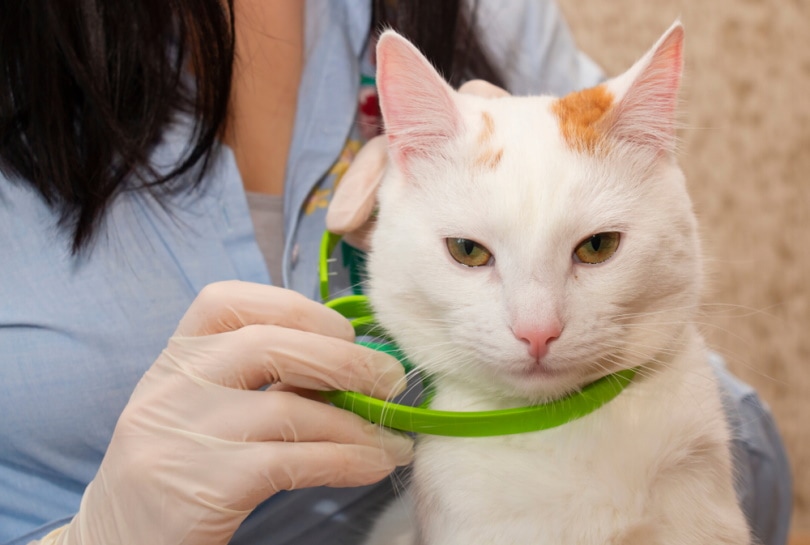
Can a Cat Wear a Regular Collar and a Flea Collar Together?
As we mentioned earlier, many veterinarians recommend against using a flea collar on your cat, as the chemicals and gasses in the collar can harm your cat’s health or even be fatal. Knowing these risks, putting a flea collar and a regular collar on your cat is also not recommended.
It can rub against your cat’s fur and skin so much that it can cause a lesion. Also, if your cat doesn’t like their collar and tries to get loose, it could get stuck in the collar and hurt itself.
What’s the Best Alternative to a Flea Collar for Cats?
There’s more than one way to kill a flea than using a flea collar. We listed several of the best below.
1. Topical Treatments
These are flea treatments you apply to your cat’s skin, usually at the back of their neck, where there’s very little chance they can lick it off. There are several topical flea medicines on the market, although some require a prescription from your veterinarian. One drawback is that you must keep your cat away from family members and pets until the medication dries.
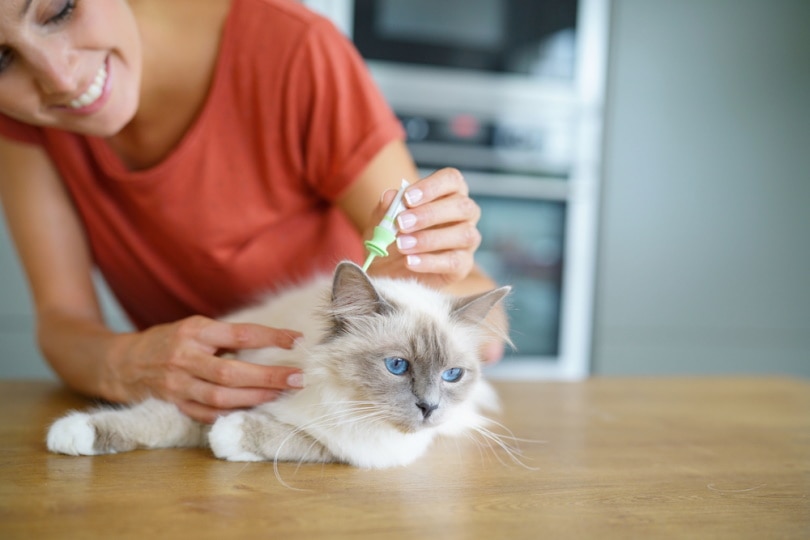
2. Oral Treatments
Usually, an oral flea control treatment is given once a month, but you can give some oral flea treatments daily to your cat to get rid of a flea infestation.
3. Comb Your Cat for Fleas Often
Most cats can easily live with a few fleas without much of a problem. However, if you want to keep fleas from multiplying rapidly, combing your cat with a flea comb regularly is essential. That way, you eliminate any adults and prevent them from laying eggs. Also, brushing and bathing your cat often will prevent fleas from becoming a big problem.
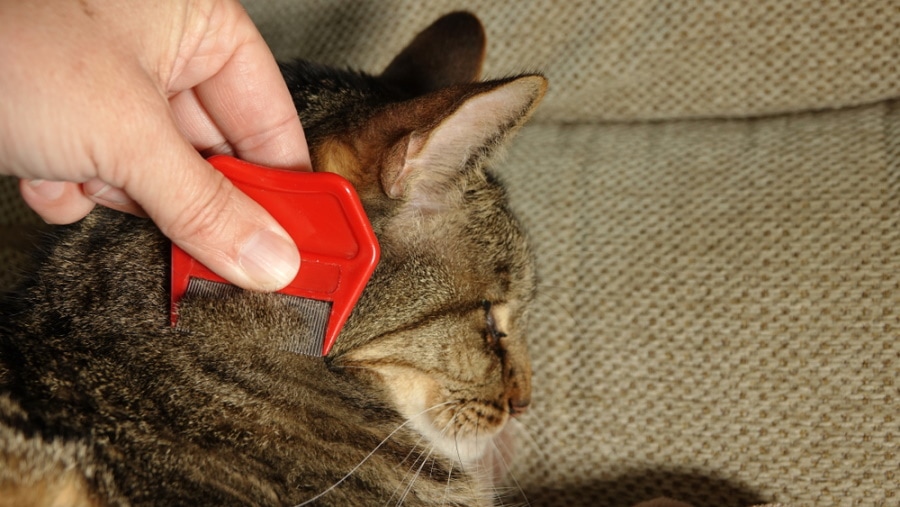
4. Keep your Cat Indoors
While not a 100% perfect solution, keeping your cat(s) indoors is pretty close. There are a few other things you would need to do, also. For example, if you have a dog, keeping it flea-free would be necessary, especially if your dog and cat are friends. Also, ensuring your cat doesn’t get outside is vital. Even a few hours in your yard can expose them to fleas and start the infestation.
5. Reduce Fleas Outside your Home
If yours is an outdoor cat, there are several things you can do to reduce the flea population around your home and prevent an infestation. First, plant lavender and fennel around your yard; they are plants that fleas hate. Also, purchase diatomaceous earth (DE) and sprinkle it all over your lawn and around trees, bushes, etc. Make sure to buy food-grade DE, so it doesn’t make your kitty sick.
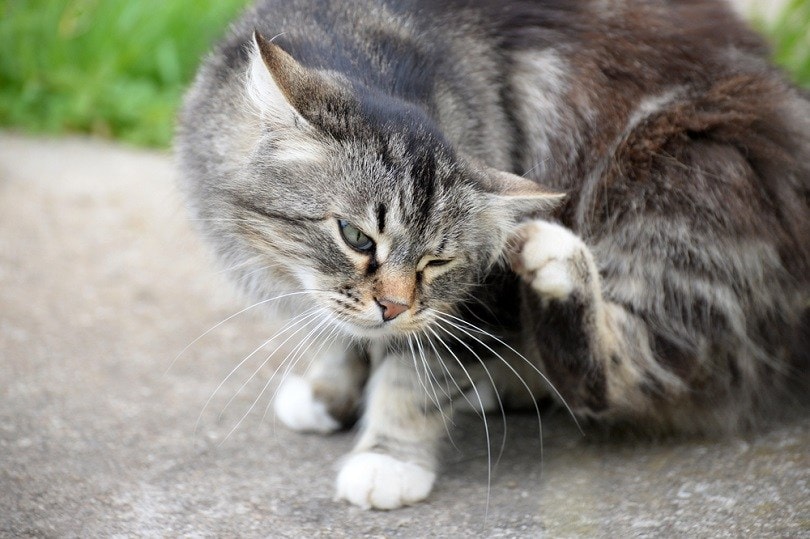
6. Vacuum and Wash Pet Equipment Often
Fleas and their eggs can survive for a short time on other things, like your cat’s bed, the material on a sofa, or a rug. For that reason, washing and vacuuming often are essential if you have a flea problem (or to prevent one). Wash anything your cat snuggles on with hot water and odorless laundry detergent. Also, you can put a blanket over your cat’s bed and wash that rather than their bed, which might be too big for your washing machine.
 Final Thoughts
Final Thoughts
Veterinarians agree that you should never use a dog flea collar on your cat as the chemical the collars use, permethrin, can be deadly to your cat. Also, most vets agree that even a flea collar made for a cat isn’t a great idea and can often be harmful (besides, they don’t work well).
With the flea collar alternatives we’ve looked at today, you should have all the information you need to protect your cat from nasty fleas while protecting its overall health and wellness! Best of luck keeping your cat and your home free of fleas.
- See also: Can I Use a Cat Flea Collar on My Dog?
Featured Image Credit: Gagarin Iurii, Shutterstock






